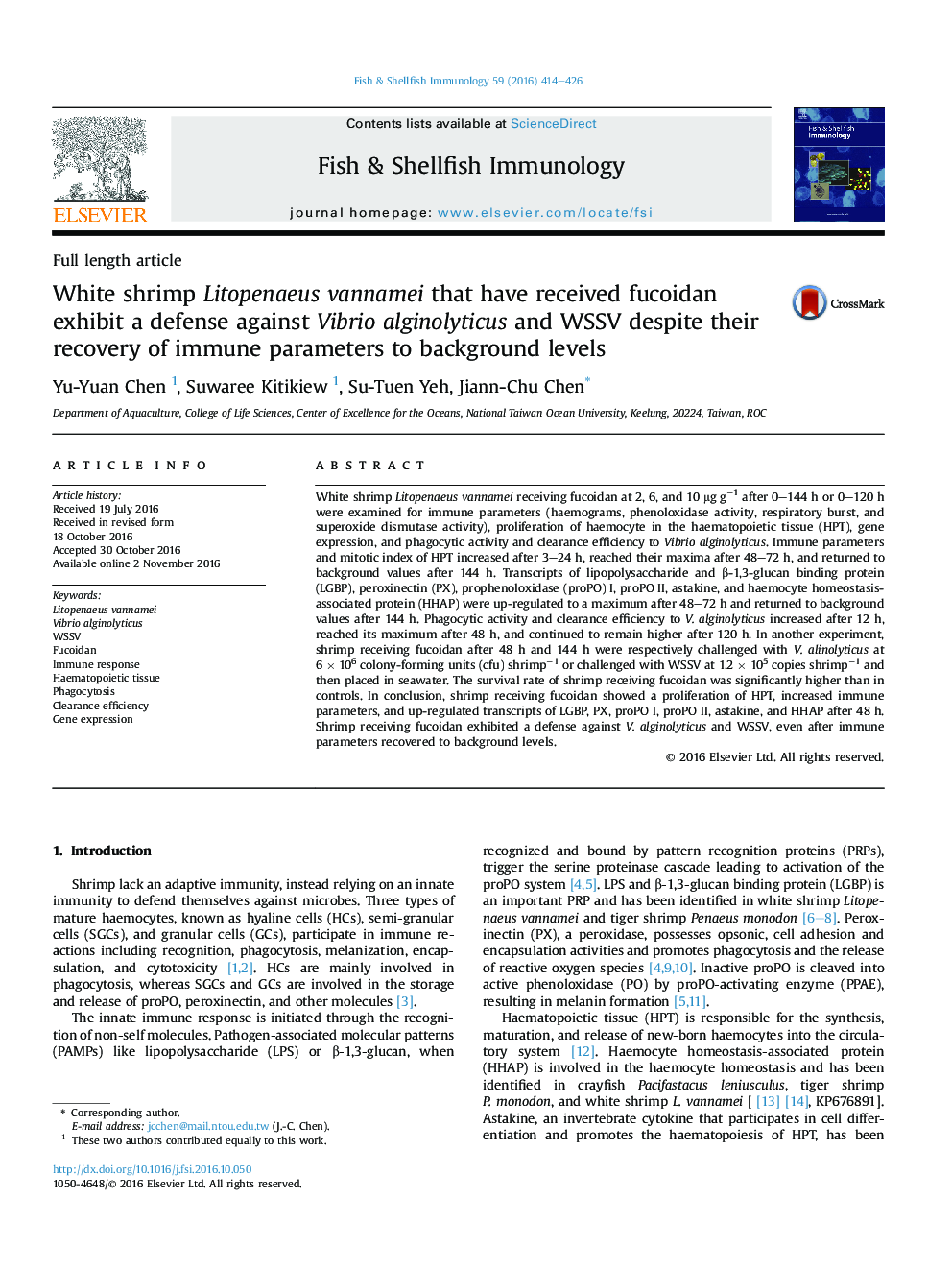| Article ID | Journal | Published Year | Pages | File Type |
|---|---|---|---|---|
| 5540806 | Fish & Shellfish Immunology | 2016 | 13 Pages |
Abstract
White shrimp Litopenaeus vannamei receiving fucoidan at 2, 6, and 10 μg gâ1 after 0-144 h or 0-120 h were examined for immune parameters (haemograms, phenoloxidase activity, respiratory burst, and superoxide dismutase activity), proliferation of haemocyte in the haematopoietic tissue (HPT), gene expression, and phagocytic activity and clearance efficiency to Vibrio alginolyticus. Immune parameters and mitotic index of HPT increased after 3-24 h, reached their maxima after 48-72 h, and returned to background values after 144 h. Transcripts of lipopolysaccharide and β-1,3-glucan binding protein (LGBP), peroxinectin (PX), prophenoloxidase (proPO) I, proPO II, astakine, and haemocyte homeostasis-associated protein (HHAP) were up-regulated to a maximum after 48-72 h and returned to background values after 144 h. Phagocytic activity and clearance efficiency to V. alginolyticus increased after 12 h, reached its maximum after 48 h, and continued to remain higher after 120 h. In another experiment, shrimp receiving fucoidan after 48 h and 144 h were respectively challenged with V. alinolyticus at 6 Ã 106 colony-forming units (cfu) shrimpâ1 or challenged with WSSV at 1.2 Ã 105 copies shrimpâ1 and then placed in seawater. The survival rate of shrimp receiving fucoidan was significantly higher than in controls. In conclusion, shrimp receiving fucoidan showed a proliferation of HPT, increased immune parameters, and up-regulated transcripts of LGBP, PX, proPO I, proPO II, astakine, and HHAP after 48 h. Shrimp receiving fucoidan exhibited a defense against V. alginolyticus and WSSV, even after immune parameters recovered to background levels.
Keywords
Related Topics
Life Sciences
Agricultural and Biological Sciences
Aquatic Science
Authors
Yu-Yuan Chen, Suwaree Kitikiew, Su-Tuen Yeh, Jiann-Chu Chen,
